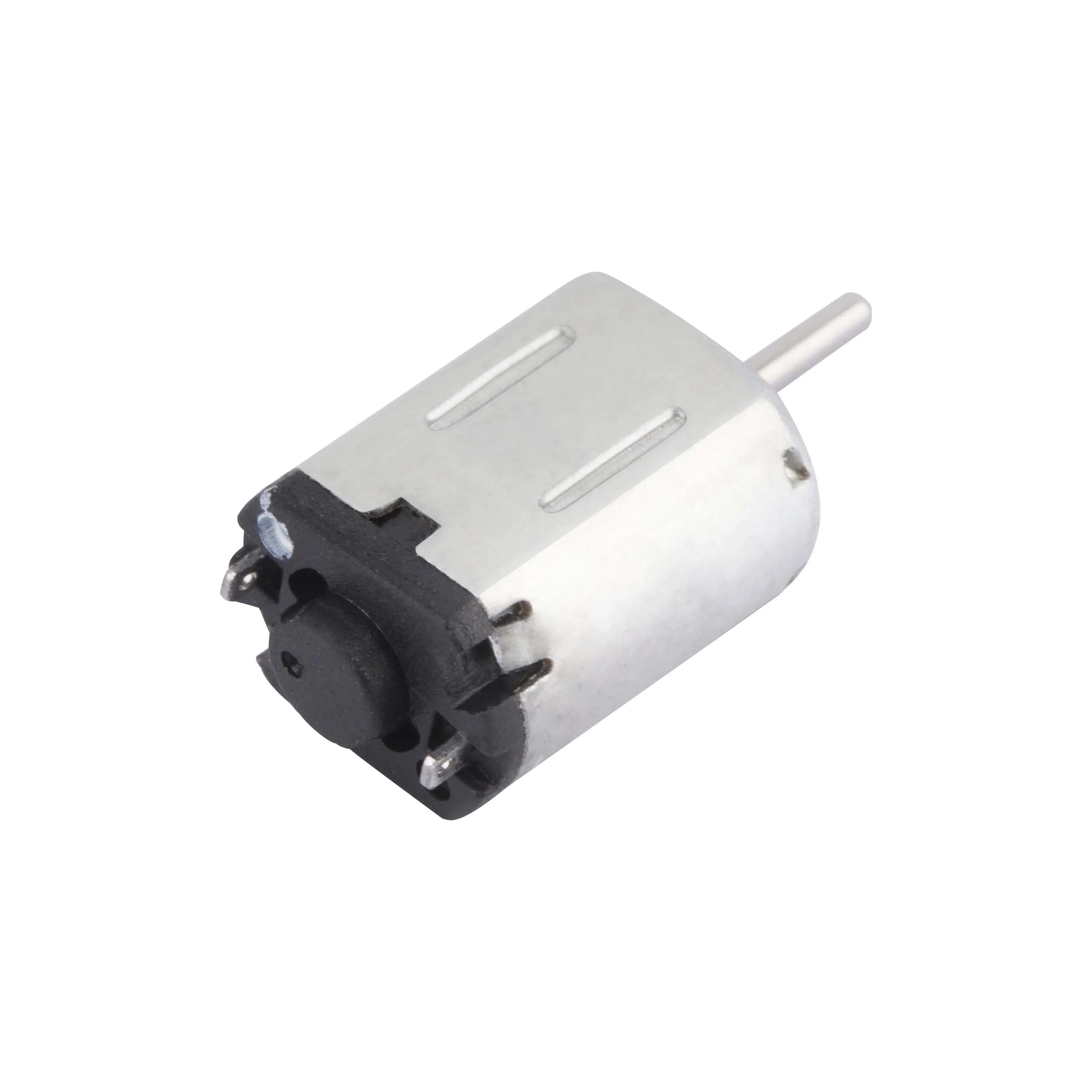How Does a Brushed DC Motor Compare to a Brushless DC Motor?

When choosing a small motor for your project or product, understanding the differences between a brushed DC motor and a brushless DC motor is essential. Both types have unique features, advantages, and drawbacks that impact their performance, efficiency, and maintenance requirements. In this article, we will explore how a brushed DC motor compares to a brushless DC motor, highlighting critical factors that will help you make an informed decision.
What Is a Brushed DC Motor?
A brushed DC motor is one of the oldest types of electric motors and remains widely used due to its simplicity and cost-effectiveness. The motor consists of a rotor (armature), a stator, brushes, and a commutator. The brushes make physical contact with the commutator, which switches the current direction through the armature windings, enabling continuous rotation.
This contact between brushes and the commutator is what gives the motor its name, but it also introduces friction and wear over time. Despite this, brushed DC motors are popular in many applications where cost, ease of control, and reliability in moderate-duty use are priorities.
What Is a Brushless DC Motor?
Unlike the brushed DC motor, a brushless DC motor eliminates brushes and the commutator by using electronic controllers to manage the current in the windings. The rotor typically contains permanent magnets, and the stator windings are energized electronically in sequence, producing a rotating magnetic field that drives the rotor.
Brushless DC motors offer increased efficiency, higher speed capabilities, and longer operational life due to the absence of brushes, which reduces mechanical wear. However, they require more complex control electronics, which can increase the initial cost.
How Does a Brushed DC Motor Perform Compared to a Brushless DC Motor?
Performance-wise, a brushed DC motor generally offers straightforward control and adequate torque for many applications, especially where a small motor is needed. The direct electrical connection through brushes ensures immediate response, making it ideal for simple and low-cost projects.
In contrast, brushless DC motors excel in precision control, speed range, and efficiency. They generate less heat and can run at higher speeds without the mechanical limitations posed by brushes. This makes brushless motors more suitable for high-performance or industrial applications.
Which Motor Is More Durable: Brushed DC Motor or Brushless DC Motor?
Durability is a significant factor when comparing these two motor types. The physical brushes in a brushed DC motor wear down with use, leading to maintenance needs such as brush replacement and occasional commutator cleaning. This wear limits the lifespan of the motor, especially under heavy-duty or continuous operation.
Brushless DC motors, like those offered by Kinmore Motor, eliminate this wear factor by removing brushes altogether. With fewer mechanical parts to degrade, brushless motors tend to last longer and require less maintenance, making them preferable for long-term applications.
How Does Efficiency Differ Between Brushed DC Motors and Brushless DC Motors?
Efficiency is where brushless DC motors generally outperform their brushed counterparts. The friction and voltage drop caused by brushes in a brushed DC motor reduce overall efficiency. Additionally, the mechanical switching of current creates energy losses and heat.
Brushless motors operate with electronic commutation, minimizing energy losses and heat generation. This efficiency advantage translates to longer battery life in portable devices and lower operating costs in industrial settings. For applications where energy consumption is critical, brushless motors are often the better choice.
What Are the Cost Differences Between Brushed and Brushless DC Motors?
Cost is often a deciding factor when selecting a motor. A brushed DC motor is usually less expensive to manufacture due to its simpler design and lack of complex electronic controllers. This makes it attractive for budget-conscious projects or devices where precision and longevity are less critical.
On the other hand, brushless DC motors require sophisticated electronic controllers and higher-quality components, which increase the initial investment. However, the lower maintenance costs and improved lifespan can offset the upfront cost in the long run. Brands like Kinmore Motor provide high-quality brushless motors that balance performance and price effectively.
Which Motor Is Easier to Control?
The control system for a brushed DC motor is relatively simple. Since the brushes and commutator handle current switching mechanically, controlling the motor usually involves just adjusting the voltage or current. This simplicity makes it an excellent choice for beginners and applications that do not require complex speed or position control.
Brushless DC motors demand more complex electronic controllers, including sensors or sensorless algorithms to time the switching of current in the stator windings. This complexity can be a hurdle for some applications but allows for finer control over speed, torque, and position, making brushless motors ideal for precision equipment.
How Do Noise and Vibration Levels Compare?
Because brushed DC motors rely on physical brushes contacting the commutator, they tend to produce more electrical noise and mechanical vibration. This can be an issue in noise-sensitive environments or applications where smooth operation is critical.
Brushless DC motors operate more quietly and smoothly since they use electronic commutation. This makes them favorable for devices like drones, medical equipment, and other small motor applications where noise reduction is important.
What Are Common Applications for Brushed DC Motors?
Despite the rise of brushless technology, brushed DC motors remain prevalent in many applications due to their low cost and straightforward control. Common uses include toys, household appliances, automotive accessories, and some industrial machinery.
In particular, when a small motor is needed to deliver reliable performance without complex electronics, brushed DC motors provide an effective solution. Their ease of repair and availability make them a practical choice in many consumer and light industrial products.
When Should You Choose a Brushless DC Motor?
Choosing a brushless DC motor is ideal when efficiency, durability, and noise reduction are top priorities. Applications such as drones, electric vehicles, computer cooling fans, and robotics often rely on brushless motors for their superior performance.
If your project demands precise speed or torque control, or if you expect the motor to operate continuously for long periods, a brushless motor from a trusted brand like Kinmore Motor will likely be the better investment.
Can a Brushed DC Motor Be Converted to Brushless?
While technically possible, converting a brushed DC motor to a brushless design is rarely practical. Brushless motors require a different construction, with permanent magnets on the rotor and stator windings designed for electronic commutation. Instead, choosing the right motor type from the start based on your application needs is advisable.
Final Thoughts: Which Small Motor Is Right for Your Application?
In summary, the choice between a brushed DC motor and a brushless DC motor depends on your specific requirements:
- For cost-sensitive, simple applications needing a reliable small motor, a brushed DC motor is often sufficient.
- For high-efficiency, long-lasting, and quiet operation, brushless DC motors are superior despite a higher initial cost.
Brands like Kinmore Motor offer a range of both brushed and brushless motors to fit diverse needs, ensuring quality and performance. Evaluating your project’s demands in terms of control complexity, durability, noise, and budget will guide you to the best motor choice.



